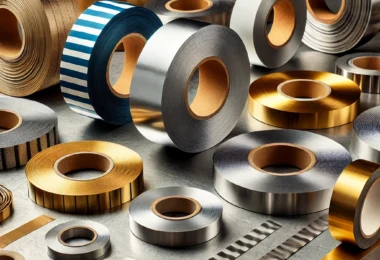In the ever-evolving landscape of technology, there is an increasing demand for environmentally sustainable solutions. As the world grapples with the effects of climate change and the depletion of natural resources, the role of modern PCB (Printed Circuit Board) design in green technology cannot be underestimated. Hardware PCB are the backbone of most electronic devices, and their design plays a pivotal role in reducing the environmental footprint of these devices.
The PCB’s Crucial Role in Electronics
Printed Circuit Boards, or PCBs, are fundamental components of nearly all electronic devices, ranging from smartphones and laptops to industrial machinery and renewable energy systems. They provide the mechanical support and electrical connectivity for the various electronic components in a device. As technology continues to advance, the complexity and functionality of PCB hardware have also grown. This increased sophistication has led to both challenges and opportunities for making these boards more eco-friendly.
Reducing Toxic Materials
Historically, PCBs have been manufactured using materials that can be harmful to the environment and human health. For instance, older PCBs often contained toxic substances such as lead, mercury, and cadmium. The manufacturing and disposal of PCBs containing these materials can result in environmental contamination and health risks. However, modern PCB board design prioritizes the use of lead-free and RoHS (Restriction of Hazardous Substances) compliant materials, reducing the toxic impact of PCB production and disposal.
Energy Efficiency and Power Management
Another critical aspect of modern PCB design in green technology is optimizing energy efficiency and power management. Electronic devices are significant contributors to energy consumption and greenhouse gas emissions. By designing PCBs with energy-efficient components and power management systems, these devices can operate with reduced power consumption, extending battery life and reducing the overall carbon footprint. Advanced power management features can ensure that devices consume energy only when necessary, allowing them to enter low-power or sleep modes when not in use.
Miniaturization and Space Efficiency
Green technology often involves creating smaller, more compact electronic devices that can perform the same functions as their larger counterparts. Modern PCB board design is instrumental in achieving this goal through miniaturization and space efficiency. Smaller PCBs not only use fewer materials in their construction but also allow for the development of smaller devices, reducing their environmental impact. Additionally, smaller PCBs can lead to more streamlined and lightweight products, which can be a significant advantage in transportation and logistics, further decreasing carbon emissions.
Enhanced Cooling and Thermal Management
The efficient dissipation of heat generated by electronic components is essential for both the performance and sustainability of electronic devices. Inefficient thermal management can lead to overheating and premature component failure, requiring more frequent replacements and leading to additional electronic waste. Modern PCB design addresses this issue by incorporating innovative thermal management solutions. Techniques such as advanced heat sinks, improved ventilation, and thermal vias in the PCB itself help dissipate heat more effectively, extending the lifespan of the device and reducing the need for frequent replacements.
Sustainable Materials and Recycling
One of the most significant advancements in modern PCB board design is the use of sustainable materials and the emphasis on recycling. Many PCBs now feature substrate materials like fiberglass-reinforced epoxy laminates, which are not only durable and reliable but also recyclable. Designers are also exploring alternative materials such as bio-based substrates made from renewable resources. Furthermore, recycling initiatives have been established to recover and repurpose valuable metals and materials from discarded PCBs, reducing the demand for virgin resources and minimizing electronic waste.
IoT and Environmental Monitoring
The Internet of Things (IoT) has revolutionized the way we interact with and gather data from the environment. IoT devices are often designed with PCBs that enable real-time data collection and transmission, facilitating environmental monitoring and conservation efforts. These devices can be used in various applications, from smart agriculture and water quality monitoring to air pollution control and wildlife tracking. Modern PCB board design is crucial for creating IoT devices that are energy-efficient, reliable, and durable, ensuring they can operate effectively in the field for extended periods.
PCBs in Renewable Energy Systems
The transition to renewable energy sources, such as solar and wind power, is a cornerstone of green technology. PCBs are integral to the efficient operation of renewable energy systems. In solar panels, for example, PCBs are used to control power distribution, monitor performance, and convert solar energy into electricity. In wind turbines, PCBs are responsible for regulating the pitch of the blades and converting mechanical energy into electrical power. Advanced PCB design in renewable energy systems ensures that these technologies can harness clean energy while maintaining reliability and durability.
E-Waste Reduction
The rapid pace of technological innovation has led to an alarming increase in electronic waste (e-waste). Old and obsolete electronic devices, including those with outdated PCBs, are often discarded, contributing to environmental pollution and resource depletion. To combat this issue, modern PCB board design focuses on creating devices that are more easily repairable and upgradable.
Sustainable Manufacturing Processes
Green technology isn’t just about the end product; it’s also about the means by which it is produced. Sustainable manufacturing processes have become a central focus in modern PCB board design. These processes emphasize reduced energy consumption, waste reduction, and the use of renewable energy sources. By implementing eco-friendly manufacturing techniques, such as water-based inks and coatings, and adopting clean and efficient production facilities, PCB manufacturers can significantly reduce their environmental impact.
Design for Disassembly
The concept of “design for disassembly” is a key principle in green technology, and it’s also relevant to modern PCB board design. Designing embedded hardware electronic devices with ease of disassembly in mind enables components and materials to be recovered and reused or recycled. This approach not only reduces waste but also conserves valuable resources. Modern PCBs are designed to be easily removed and replaced, making electronic devices more sustainable over their lifecycle.
Conclusion
The role of modern PCB board design in green technology cannot be overstated. PCBs are the foundational components of the vast majority of electronic devices, and their design directly impacts the environmental footprint of these devices. By prioritizing the use of sustainable materials, enhancing energy efficiency, and promoting recyclability, modern PCB design is contributing to a more eco-friendly and sustainable future.














